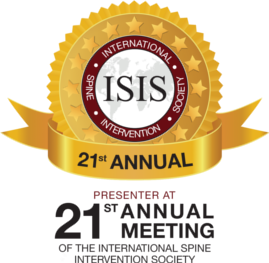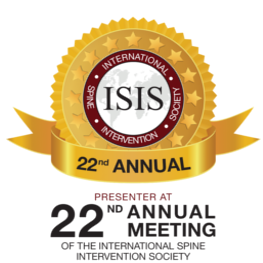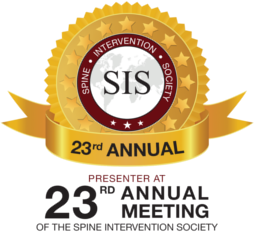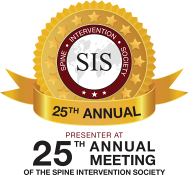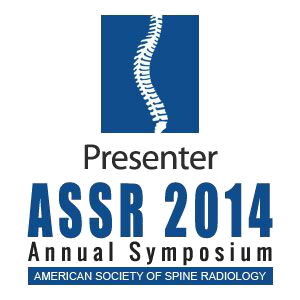Lumbar (spine) decompression surgery is a prevalent, safe, and less invasive procedure. It aims to alleviate the pressure on the nerves found in the lumbar spine (lower back). The procedure is most helpful in relieving nerve pain symptoms (sciatica) resulting from lumbar spondylosis. Lumbar spondylosis occurs when the nerves in the lower back become compressed due to wear and tear or degeneration.
Spinal degeneration results in the development of spurs (bony overgrowths), bulging discs, thickened ligaments, and arthritic joints. All these conditions can cause the compression of the nerve roots extending to the legs. The lead cause of leg-related pain is the compression of these nerves. The pain worsens with walking. If the nerves are severely compressed, a person can experience weakness in their legs, making walking challenging.
If non-operative treatments are not effective, or the nerve compression is severe, doctors will recommend spine decompression surgery. Relaxing the compressed nerves alleviates leg pain symptoms in over 90 percent of patients.
How The Lumbar Decompression Surgery Is Performed
If your medical professional determines you would benefit from spine decompression surgery, they will put you on a waiting list. They should communicate how long you will likely be on the waiting list before you can undergo the procedure.
Before the Surgery
You want to be fit before the procedure to successfully recuperate from the surgery later and minimize the risk of developing complications. Once you know you will soon undergo spine decompression surgery, you want to eat well, quit smoking (for smokers), and exercise regularly.
Your medical professional will ask you to go for a preoperative assessment appointment some weeks or days before the operation. The doctor may need you to undergo various blood tests at this appointment. They will also check your general health to ensure you are a suitable candidate. They will also conduct an MRI scan or X-ray of your spinal cord.
You can use this assessment to voice your concerns or inquire about the operation. Your medical professional should tell you who will conduct the surgery, and they may introduce you to them. The spine decompression surgical procedure is conducted by an orthopedic surgeon experienced in spinal surgeries or a neurosurgeon.
The Operation
Your doctor will admit you to the hospital on your surgery day or a day before based on the level of treatment required. Your anesthetist and surgeon will tell you what to expect during the procedure. You can ask any question you have at this point. Before the surgery, you must sign a consent form confirming your understanding of the operation and possible risks. Usually, your surgeon will ask you to drink or eat for about six hours before your surgery.
You will lie on a unique curved mattress facing down during the procedure. This permits the surgeon better to access the impacted section of your spinal cord and minimize the pressure exerted on the pelvis, abdomen, and chest.
The surgeon uses general anesthesia, which means you will be asleep the whole time the procedure takes place and will feel no pain. The whole surgery takes a minimum of sixty minutes. However, depending on how complex it is, it might take longer.
The surgeon will determine the precise extent of decompression needed using X-ray imaging. They will make a vertical incision at the center of the back, running along the spine. How long the cut will be will be based on:
- The number of discs or vertebrae that need treatment
- Whether the surgeon has considered fusion
- How intricate the surgical procedure is
The surgeon will lift the back muscles from the backbone to uncover the spine. They will gradually remove the affected nerves or tissues, removing the pressure from the nerves or spinal cord. Once the surgeon has achieved adequate compression, they will stitch the muscles back together, close the incision, and stitch it up.
The Surgical Procedures Involved
Spine decompression surgery aims to alleviate the pressure exerted on your nerves or spinal cord while maintaining much of the flexibility and strength of the spine. Based on the particular reason you are undergoing surgery, your surgeon may have to carry out various procedures during your surgery to achieve effective results. The primary procedures they may have to perform are:
Spinal Fusion
Spinal fusion is where the surgeon joins two or more spinal bones together using a bone graft. This assists in preventing excessive movement between two adjacent spinal bones, minimizing the likelihood of further compression or irritation of the neighboring nerves and minimizing pain and other related signs.
The surgeon can take the additional part of the bone from a donated bone or another part of your body (often the hip). More recently, surgeons have used (human-made) synthetic bone substitutes. To enhance the chances of a successful spinal fusion, some surgeons might use connecting rods and screws to tighten the bones. Afterward, the surgeon closes the incision with surgical staples or stitches. The surgeon
Discectomy
Discectomy is a procedure where the surgeon removes part of the damaged (slipped or bulging) disc to relieve the pressure exerted on the spinal nerves. Like laminectomy, the neurosurgeon incises over the impacted part of the spinal cord down to the lamina. Then, they will pull the nerves away to uncover the bulging or prolapsed disc.
They will remove only enough bulging or prolapsed discs to relieve the pressure exerted on the spinal nerves. The surgeon will leave most of that disc behind to continue functioning as a shock absorber. After the procedure, the surgeon closes the incision using surgical staples or stitches.
Laminectomy and Laminotomy
Laminectomy and laminotomy involve the surgeon removing parts of tissue or bone that are exerting pressure on the spine. The surgeon will make an incision over the impacted part of the spinal cord down to the lamina to reach the compressed nerves. They will then pull back the nerves toward the middle of the spinal column and remove a section of the ligament or bone pressing on them. The surgeon closes the cut using surgical staples or stitches to finish the procedure.
Foraminectomy or Foraminotomy
Both foraminectomy and foraminotomy are surgical procedures to enlarge the openings in the spinal column whereby nerve roots leave the spine. They involve removing a bulging disc or excess bone. This releases all the compressed nerves in that place. The surgeon will incise your back, exposing the impacted vertebra. They will then widen the intervertebral foramen and remove any blockages. Foraminotomy is similar to a foraminectomy, only that the surgeon removes a more significant bone amount.
Corpectomy
Corpectomy involves the surgeon removing the big front part of the affected spinal bone. They might also extract the bulging or herniated disc. This alleviates the pressure exerted on your nerves and spinal cord. The neurosurgeon will then replace the spinal bone with a spacer, like a cage, and fuse the spinal bone below and above the removed part to ensure stability.
Corpectomy surgery is a much bigger procedure compared to a discectomy. Therefore, the surgeon will often use a bigger and more vertical cut to permit them to access the vertebra better.
Your surgeon will inform you more about what surgical procedure they will perform during your surgical procedure.
Keyhole Surgery
Usually, lumbar decompression surgery is conducted via a large cut in your back, which is called open surgery. Sometimes, spinal fusion may be conducted successfully utilizing a keyhole method called micro-endoscopic surgery. Surgeons perform micro-endoscopic surgery using surgical instruments and a small camera inserted via a small cut in the back. The surgeons are guided by observing the procedure on a video monitor.
The microendoscopic surgical procedure is intricate and not suitable for everybody. Whether it is ideal for you is dependent on the precise issue in your lumbar spine. Also, there is a slightly increased likelihood of accidental harm during this surgery than with the open surgery procedure.
Some techniques employed during the microendoscopic surgical procedure, for example, utilizing a heated probe or laser to burn a part of the damaged discs, are somewhat new. Thus, it is still unclear how safe or effective they might be with time.
A benefit of the microendoscopic surgical procedure is that its recovery period is much shorter. Patients can often leave the hospital the next day after the surgery.
Interspinous Distraction
Interspinous distraction is a form of lumbar surgical procedure to treat spinal stenosis. The procedure entails making a tiny incision above the spinal cord and implanting a device called a spacer in between two vertebrae so they cannot shift to the underlying nerves.
This procedure appears safe in the short term. However, since it is a new procedure, it is uncertain how effective it will be in the long term. A potential risk of this procedure is the spacer may shift out of its position, necessitating another surgery to rectify.
Why May You Need Lumbar Decompression Surgery?
If you have spinal stenosis (narrowing of the spinal canal), you will have to undergo decompression to relieve the nerves that the narrowing has trapped. The spinal canal has nerves leaving the spine. Bulging discs, spinal tumors, spinal arthritis, or, in rare cases, spondylolisthesis (whereby a spinal bone slips backward or forward) can lead to this narrowing. You can also treat slipped discs, sciatica, and spinal injuries using lumbar decompression surgery.
Doctors often recommend spinal surgery only when nonsurgical treatments fail to alleviate symptoms. Many patients who undergo the surgery notice that their pain significantly reduces. Patients who used to walk with difficulty before surgery due to leg weakness or pain can often walk farther and more quickly after the procedure.
First, your medical professional might prescribe anti-inflammatory drugs for pain and comfort. If you are experiencing sciatica (pain in your leg due to pressure exerted on the nerves in your lumbar spine), your surgeon might prescribe a steroid injection in your spinal cord.
What to Expect AfterSurgery
When the general anesthesia wears off after the surgical procedure, your back might feel, and you will likely be attached to one or several tubes. These might include the following:
- A pump to convey medication directly into the veins
- A urinary catheter (a flexible, thin tube inserted in the bladder) if you have challenges urinating
- Drain to remove any fluid from the surgery wound
- An intravenous drip (drip to supply fluids into your vein) to ensure you do not become dehydrated
Usually, these tubes are only attached briefly after your surgery.
Right after surgery, you will experience pain around and in the surgery site. Your doctor will give you pain relievers to ensure you are comfortable and assist you in moving. Usually, the initial leg pain you experienced before the surgical procedure will improve immediately, but tell your doctor and nurses if it does not.
A few people have challenges urinating after surgery. Usually, this is temporary, but rarely, complications like nerve damage might cause the bladder or legs to cease working correctly. You must inform your nurses and doctor immediately should you experience problems. It will take a maximum of one and a half months for the tiredness and general pain after your surgery to disappear entirely.
After your surgery, you will have staples or stitches to close the incisions or cuts. Deep stitches underneath the skin usually dissolve; the surgeon does not need to remove them. If the surgeon uses dissolvable stitches, they do not have to remove them. The surgeon will remove non-dissolvable staples or stitches five to ten days after the procedure. Before leaving the hospital, your surgeon will give you an appointment to remove them.
Your surgeon may cover your stitches with a simple adhesive dressing, such as a plaster. Ensure you do not wet your dressing when you bath or shower. After the doctor removes your stitches, you will require a dressing, and you can shower or bathe as usual.
Your doctor will need you to move about as soon as possible, often from the date following the operation. Inactivity may increase your chances of developing deep vein thrombosis (DVT), and movement can speed up recovery.
Following your surgery, a physiotherapist will assist you in safely regaining movement and strength. They will teach you different exercises you could perform in the comfort of your home to aid your recovery.
Recovery After Surgery
The period you will remain in the hospital will be based on the level of decompression your surgeon will perform. Most people spend one night in the hospital, while others stay up to four days. Your nursing team and doctor will ensure you are safe and fit to be discharged. Most people will walk unsupported the day following the surgery. However, you might have to avoid arduous activities for approximately one and a half months.
You should only resume work or drive once the doctor allows you to do so at your follow-up appointments. How soon you can resume work depends on how fast you recuperate after the operation and the kind of work you do. Many resume work after one to two months if their duties are manageable. If the job entails lifting heavy objects, a lot of driving, or other strenuous activities, you should hold off resuming work for three to six months.
When discharged, arrange for somebody to drive you home. Your surgeon will remove any staples or stitches ten to fourteen days following your operation.
You might feel sore and exhausted for the initial few weeks. You want to rest as much as you can and permit your surgery wound to heal. Your doctor will encourage you to walk while recovering. Begin with short-distance walks and increase them gradually.
It will take you approximately four to six weeks to attain your full level of function and mobility. This will be based on how severe your symptoms and condition are before the surgery. Avoid sitting down for long. Keeping moving will assist you in avoiding deep vein thrombosis (DVT).
Complications and Risks of Lumbar Decompression Surgery
Many people recover well and resume their usual activities after lumbar decompression surgery. Like any surgical procedure, there may be complications:
- Bleeding
- Pain
- Damage to the nerves or spinal cord
- Difficulty passing urine
- Deep vein thrombosis (blood clots)
- Scarring
- Chest infection
- Infection of the surgical site (incision)
Specific complications of a lumbar decompression surgery include the following:
- Leaking of the spinal fluid
- Nerve damage
- Infection in the spine
- Loss of bowel or bladder control
- Continued numbness or pain
- Bleeding in the spinal column
Find a Neuro-Interventional Surgeon Near Me
If you suffer from sciatica, it is not the end of the road. You can undergo treatment to relieve the pain and regain control of neurological functions. One of the available treatment options is lumbar decompression surgery. At LAMIS, our neurosurgeons, led by Dr. Rappard, focus on assisting patients in leading healthier and more active lives by providing treatment plans to restore mobility and alleviate pain.
We have undergone training in using the most advanced spinal cord surgery techniques. Therefore, we can offer patients the best options for their needs, including lumbar decompression surgery. We are devoted to providing patient-centered care at every stage of treatment. If you seek treatment to alleviate spinal and leg pain in Los Angeles, CA, call us at 310-734-6088 for a consultation.

